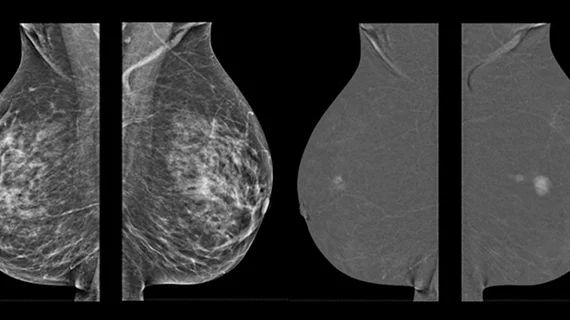Is contrast-enhanced mammography suitable for women with breast implants?
With contrast-enhanced mammography (CEM) gaining traction among breast imaging modalities for women with increased risks of developing cancer, experts in the field caution that its use needs to be further validated in various subgroups.
Among these subgroups are women with breast implants.
A new paper published in Clinical Imaging offers a up-to-date, detailed overview of screening this cohort of women [1]. The authors highlight several studies supporting the use of routine screening mammography for women with breast implants, as well as additional considerations that need to be made for these patients.
“Many investigators have looked at the effects of breast implant augmentation on screening mammography, showing an overall decrease in measurable breast tissue in women following breast implant augmentation,” corresponding author Molly Hogan of Memorial Sloan Kettering Cancer Center and colleagues explained. “In addition, women with implants undergo two sets of images—standard views and implant-displaced views—which increase the overall exam dose.”
All things considered, the authors suggested, CEM is a technically feasible screening option for women with breast implants. This is especially true when taking into account the increased risks a portion of them may have, as many women with implants could have an oncologic history.
The researchers arrived at this conclusion after analyzing multiple studies on the matter, in addition to conducting their own assessment of their tertiary cancer center's database of 104 women with implants. These women underwent 198 CEMs combined between November 2014 and March 2020. The majority—88%—of patients underwent CEM due to heightened cancer risks, including increased breast density in 93%. Routine and implant-displaced low-energy views were obtained without complication on all but one patient, who was reported to have vasovagal symptoms following contrast administration.
Although the authors did concede that breast MRI is the standard of care for women with high risks, they acknowledged that its availability is limited, and that the exam may be financially out of range for many women needing enhanced imaging. In these instances, the authors maintained that CEM would suffice for both diagnostic and screening capacities, as it has been proven to not increase recall rates or result in variances in breast cancer detection.
To learn more, click here.

